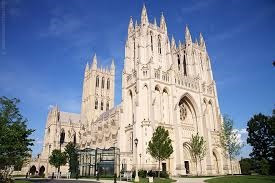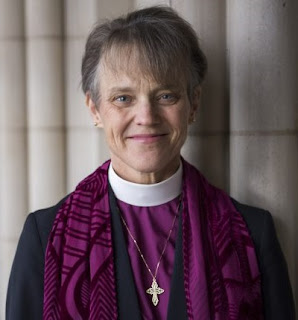For several weeks I have wanted to think with you about the impressive
feats of Meriwether Lewis and William Clark. It was 215 years ago in June that
they first passed through what is now Kansas City, not far from where I live.
Most of their long, dangerous journey was still ahead, though, and what a
remarkable journey it was!
The Corps of Discovery
 |
| Lewis & Clark Statue at Kaw Point, Kan. (one of my favorite places in Kansas City) |
I had long mistakenly thought that Lewis
& Clark’s expedition, which began in May 1804, was a direct result of the
huge Louisiana Purchase realized when the U.S. signed a purchase treaty with
France in April 1803.
(The Louisiana territory purchased was about
827,000 square miles. Some wonder if part of DJT’s recently reported desire to
buy Greenland, which is more than 836,000 sq. mi., isn’t partly due to his
desire to claim to have made the largest land purchase in U.S. history.)
Soon after Thomas Jefferson became President
in 1801, he employed Meriwether Lewis as his personal secretary. By the next
year, Jefferson was talking with Lewis about the possibility of him leading an
expedition from the Mississippi River to the Pacific Ocean.
Lewis (1774~1809) was making definite plans
and assembling equipment necessary for such an expedition prior to the
Louisiana Purchase, although the latter gave great impetus to implementing that
treacherous journey.
In July 1803, William Clark (1770~1838)
accepted Lewis’s invitation to become co-captain of the expedition, which came
to be called the Corps of Discovery.
The next year on May 14, the Corps started up
the Missouri River from the St. Louis area, beginning their long, dangerous
trek to the Pacific Ocean. There were about 30 men who started this journey,
including York, Clark’s personal black slave.
Positive Results
There were certainly many positive results of
the Lewis and Clark Expedition—especially for white men like the expedition’s
leaders and the President who dispatched them.
To cite “Lewis and Clark’s Historical Impact,”
an online
article, the expedition produced an accurately mapped route to the Pacific
Ocean, introduced Americans and Europeans to hundreds of varieties of plants
and animals, and opened up new territory for the fur and lumber trade.
Overall, it “allowed a young country to
blossom into greatness.” Thus, there “is no doubt that the expedition of Lewis
and Clark forever changed the course of the country’s history.”
Negative Results
The Introduction of a website titled “Origins
of the Ideology of Manifest Destiny” begins, “The most influential ideology
in our nation’s history is manifest destiny.”
It seems quite evident that the Lewis &
Clark Expedition furthered that ideology. Although the term manifest destiny
was not coined until 1845, the core belief that USAmericans were destined by
God to reign over the entire continent seems to have been in the minds of the
founders of the U.S.—and in the mind of President Jefferson.
Although Lewis and Clark did not seem to have
any harsh or oppressive views of the American Indians they encountered,
nevertheless, their expedition resulted in harsh and oppressive treatment of
the Native Peoples for most of the 19th century.
A bicentennial article in Teaching Tolerance
emphasizes that while “American history tends to eulogize what Lewis and Clark ‘found’
on their 7,400-mile journey,” for Native Americans “the story instead is about
what was lost—lives, land, languages and freedom.”
In the same article, a Native American named BlueHorse
lamented, “Within 100 years of Lewis and Clark passing through here, every
Native nation they encountered”—and there were about 50 of them—“was displaced
from their traditional lands and put on reservations.”
What, I wonder, can be done now to mitigate
the highly negative results still remaining from Lewis and Clarks’
nation-changing expedition that began 215 years ago?







